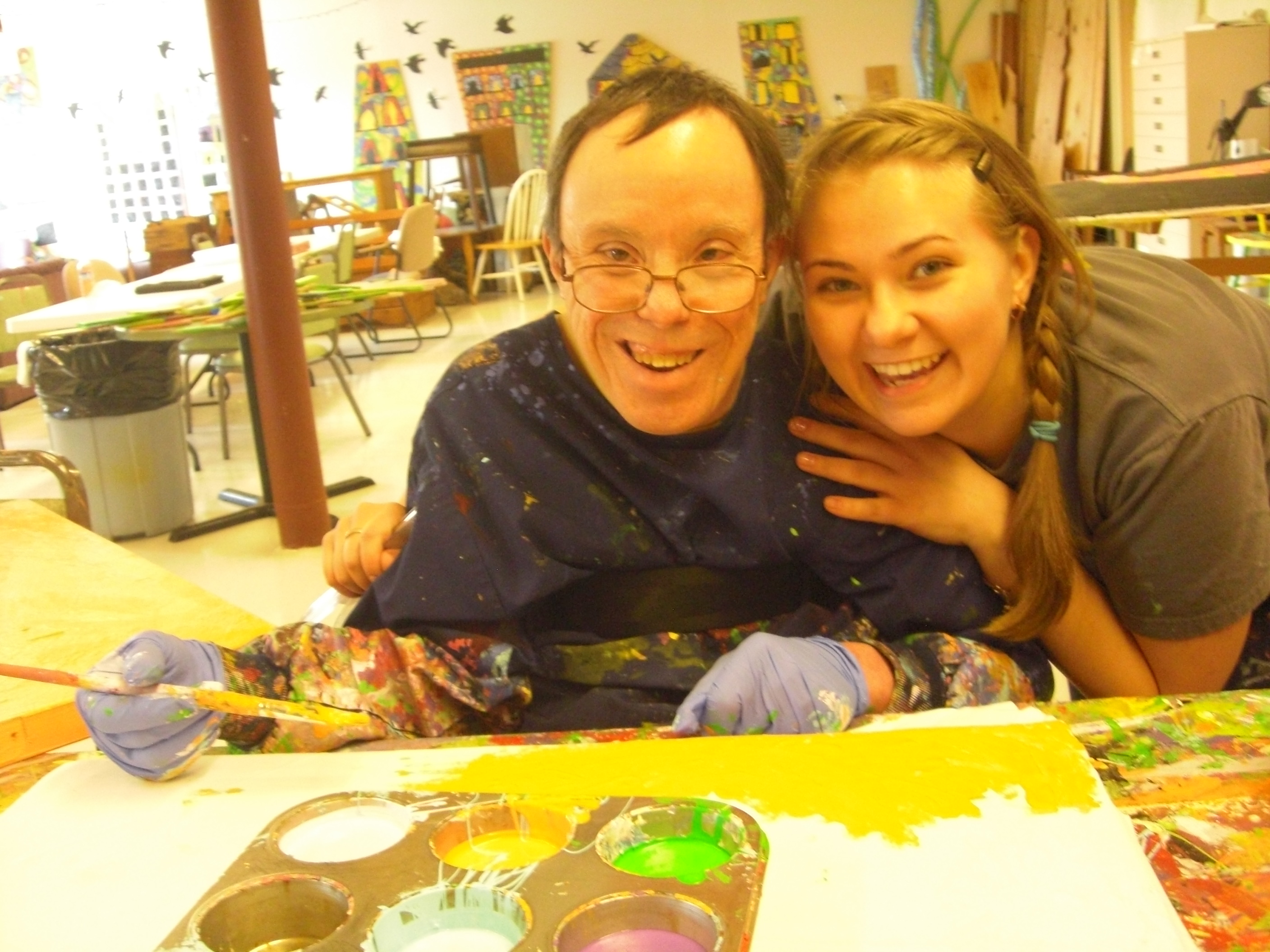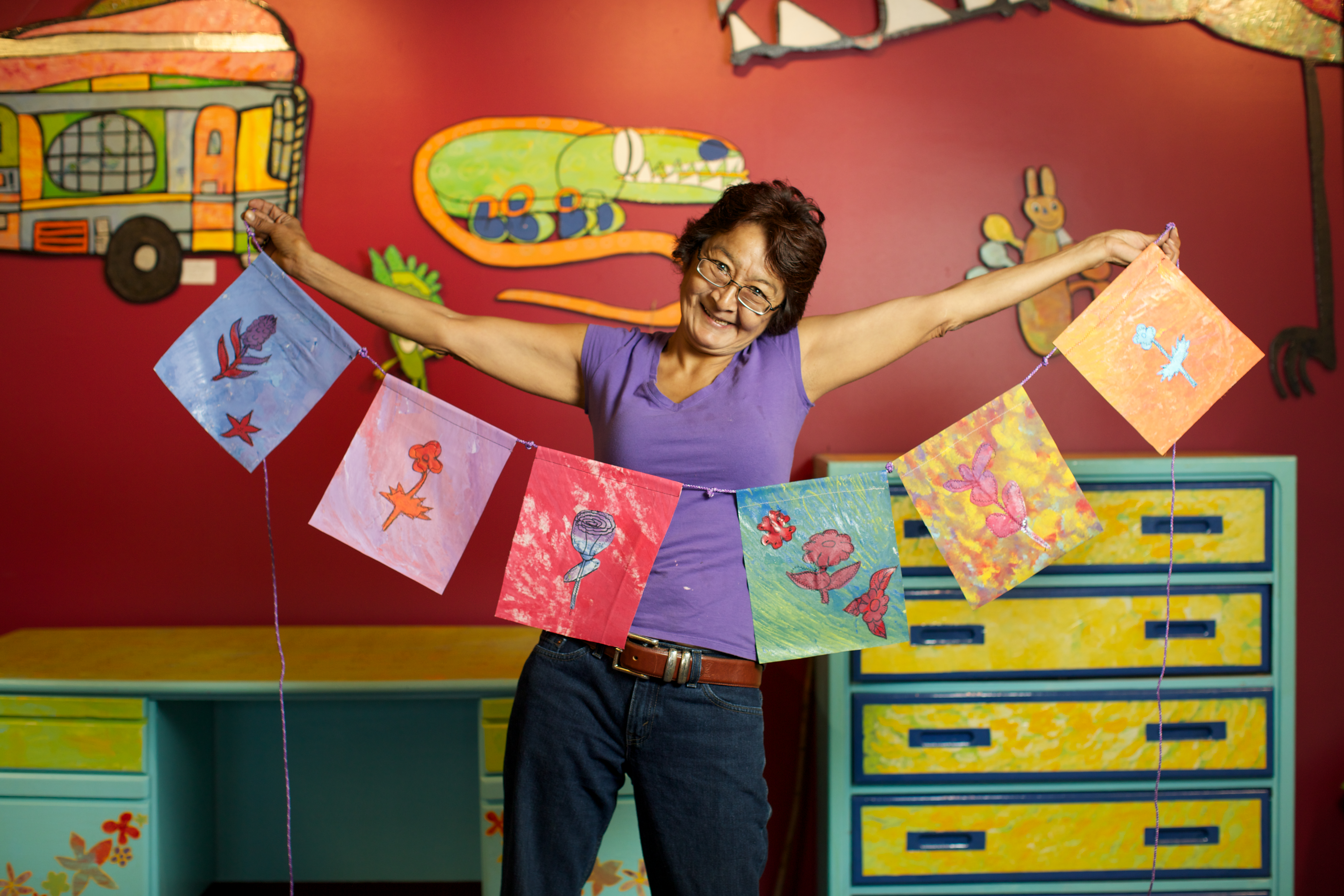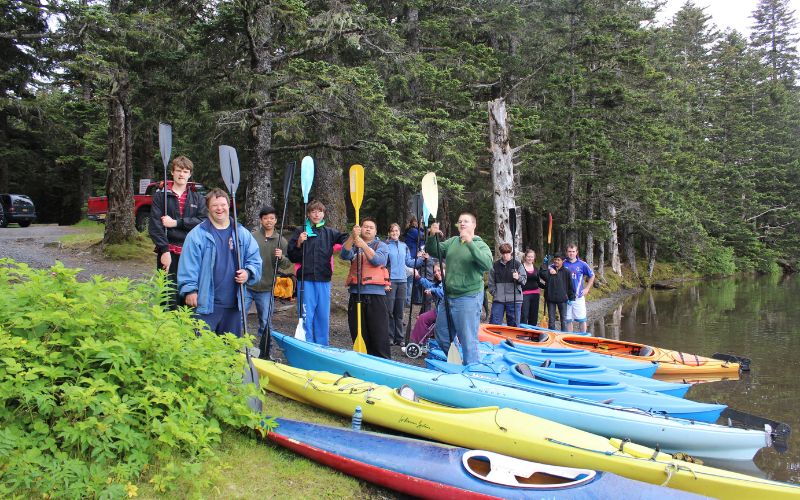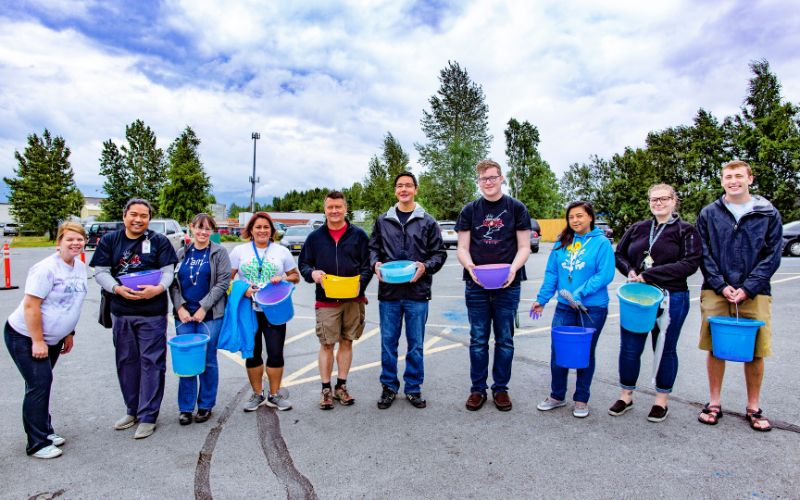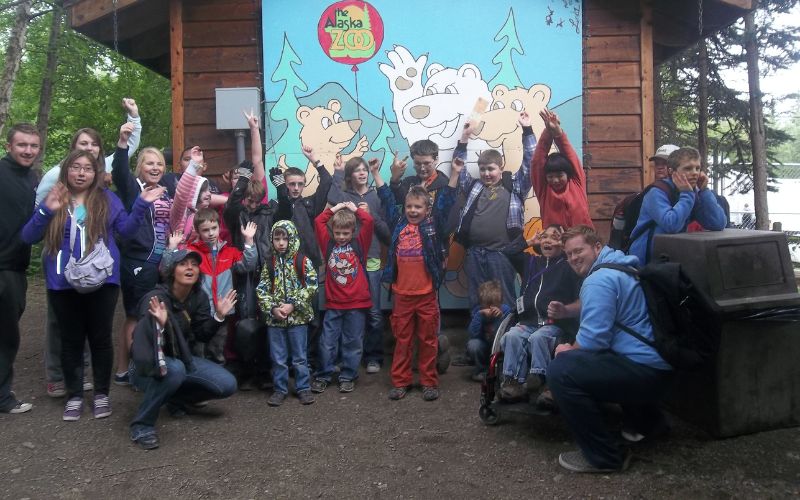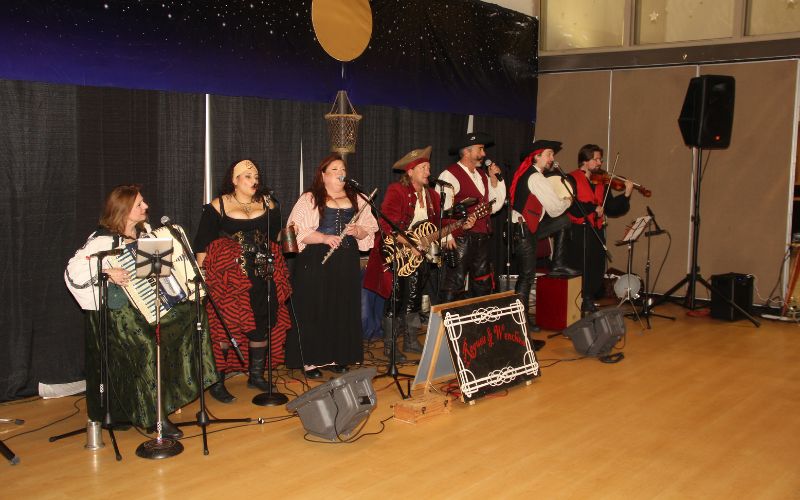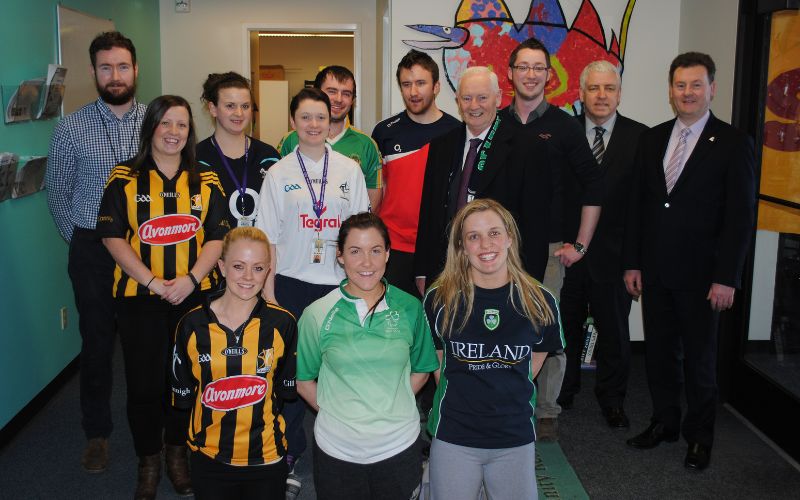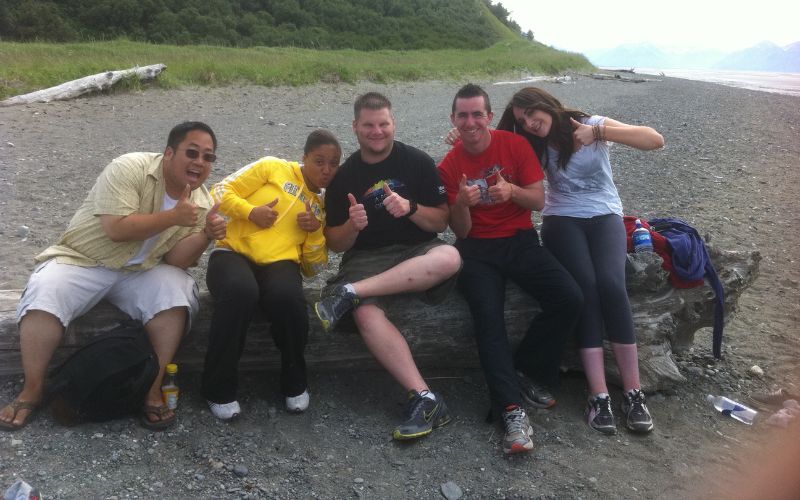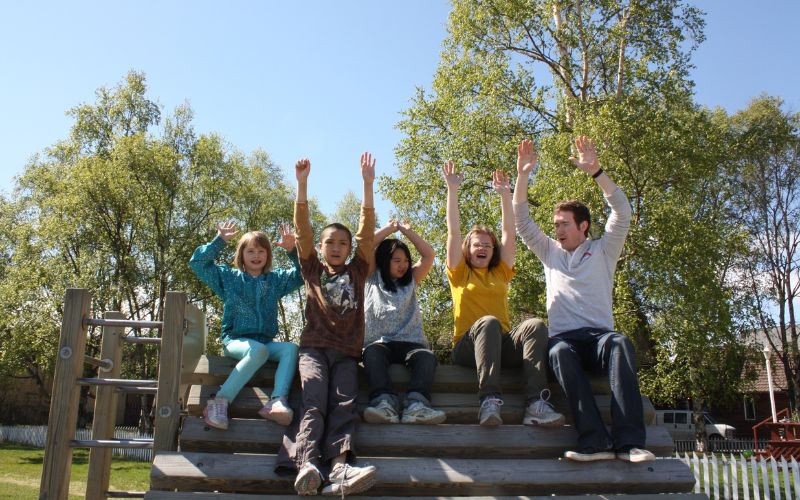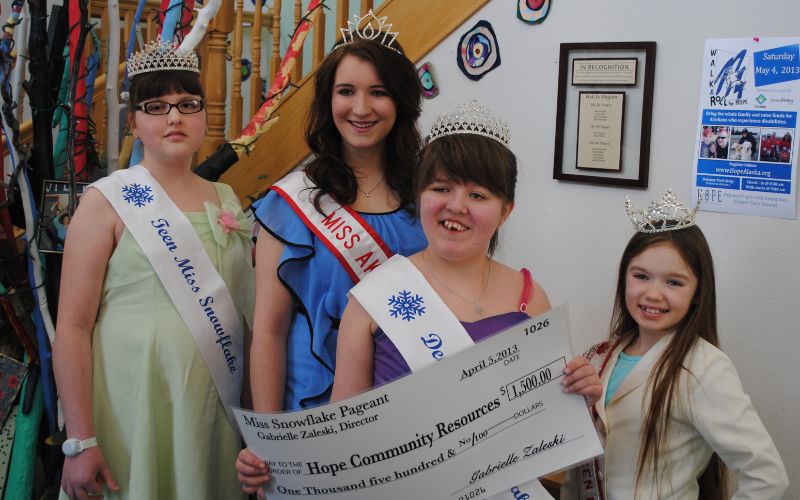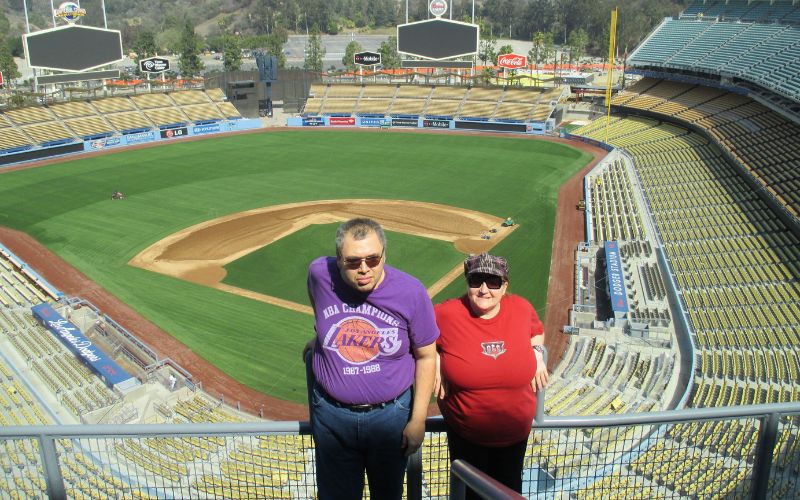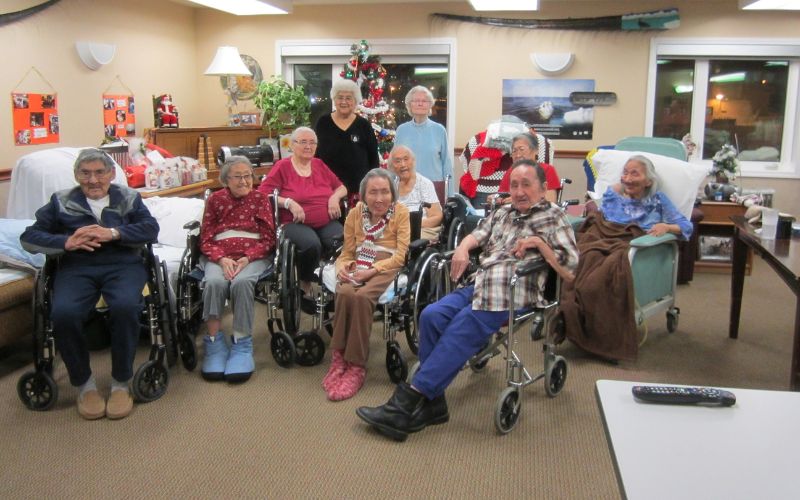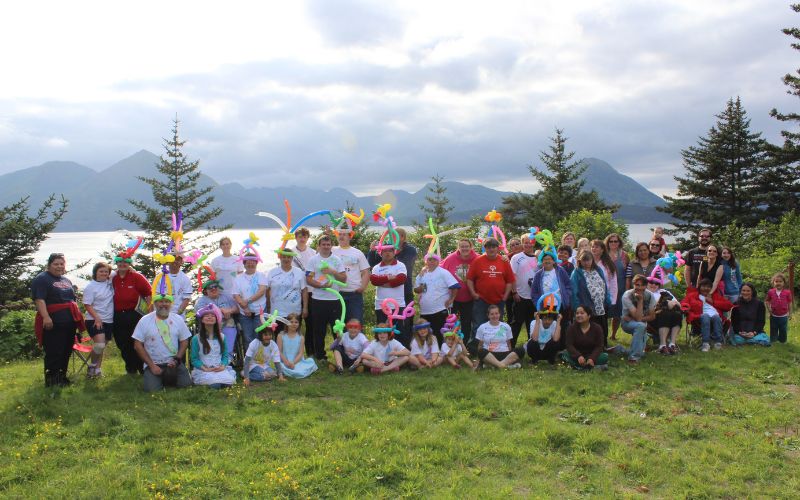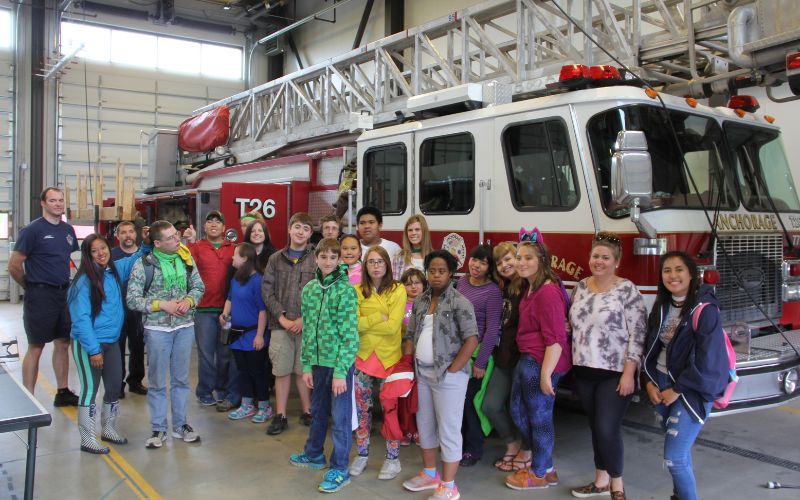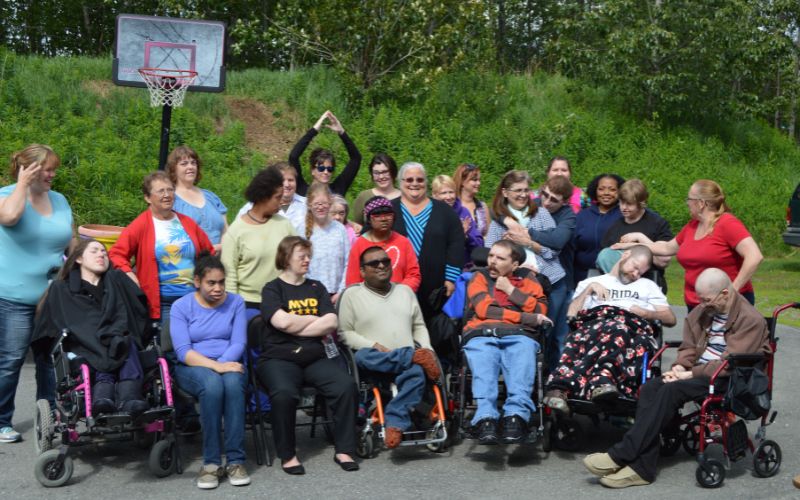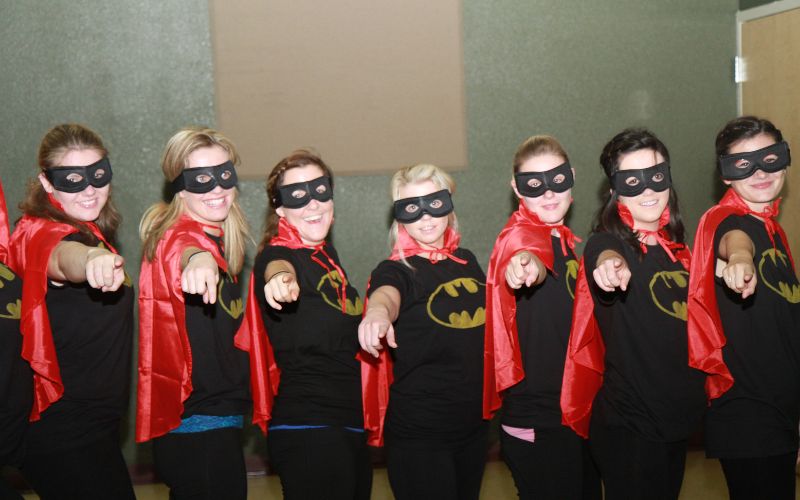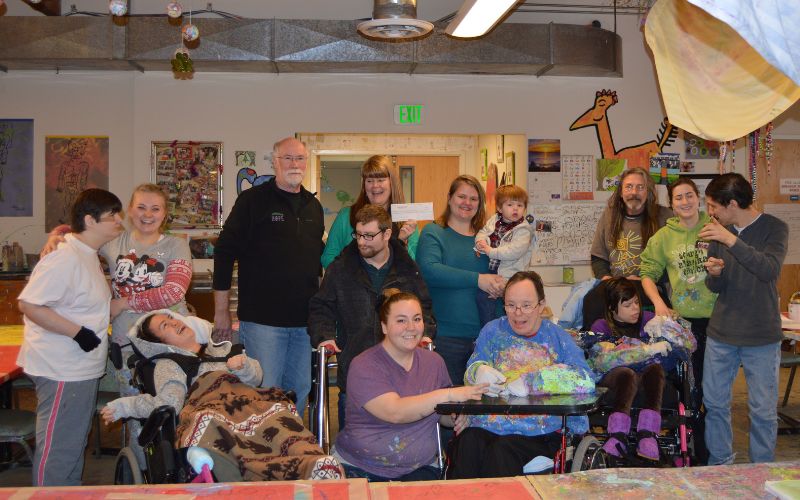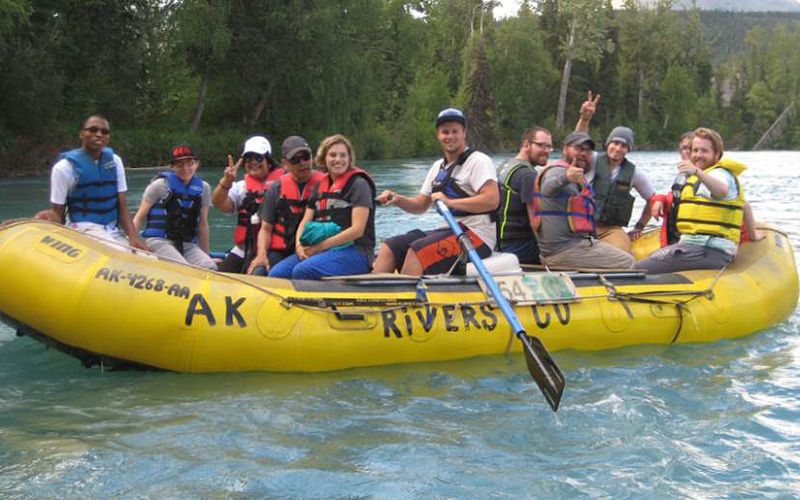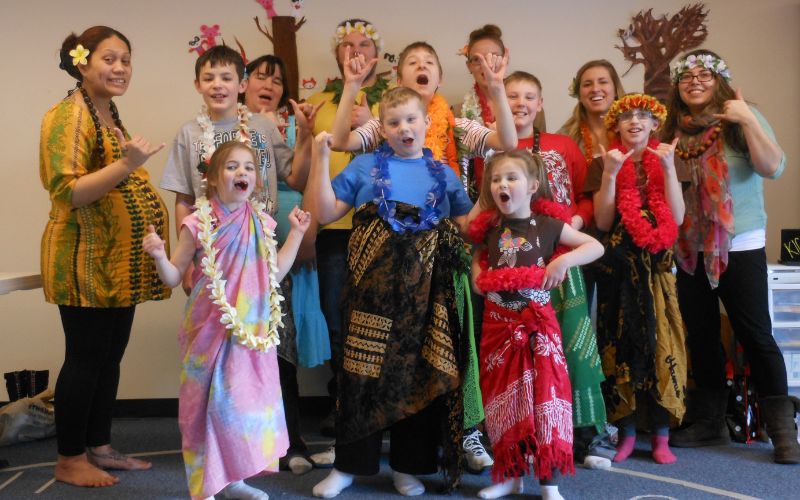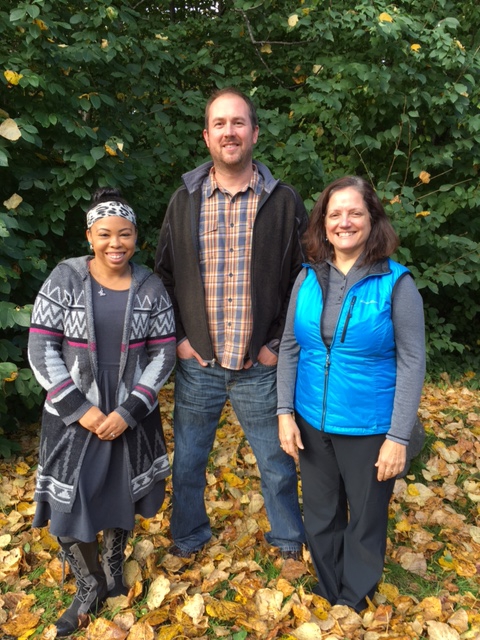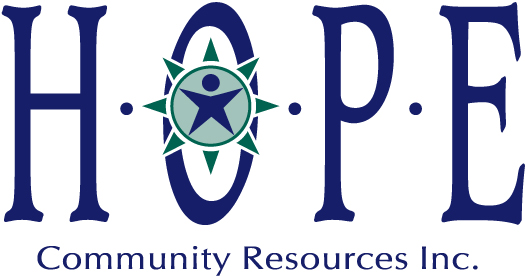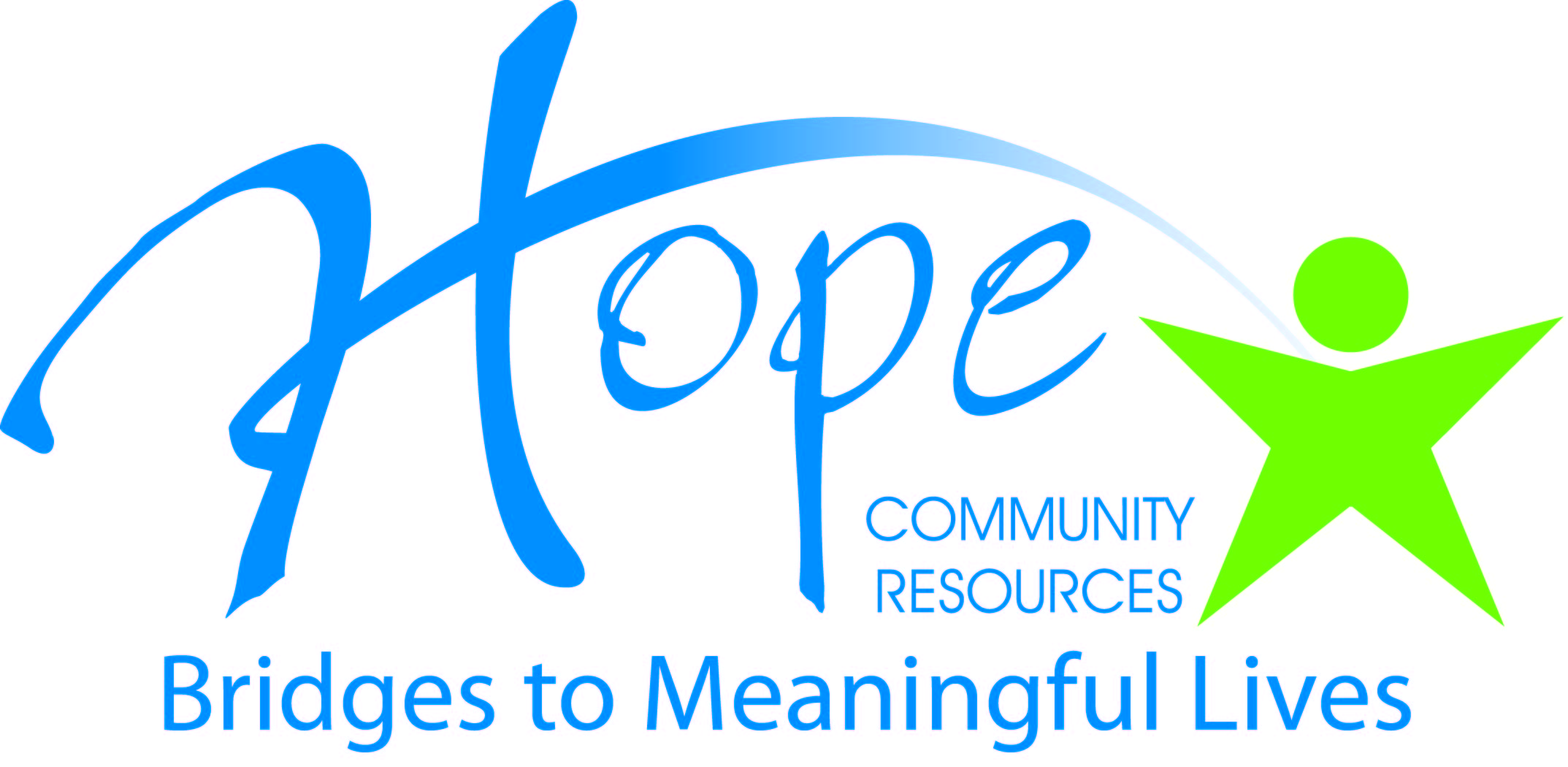The 2010s
The Heart of Hope
Charting a Future without Limits
In the early years of the new decade, Hope Community Resources made strategic advances to better meet the evolving needs of Alaskans with intellectual and developmental disabilities, autism, traumatic brain injury, and behavioral health challenges. In 2018, Hope celebrated 50 years of service—supporting over 1,400 individuals and families across nine regions, from Anchorage and Kodiak to remote areas like Delta Junction and the Copper River Basin.
Hope offered a wide range of person-centered services, including care coordination, mental health support, employment and volunteer opportunities, assisted living, elder care, after-school programs, outdoor pursuits, and spiritual guidance. The Board of Directors reaffirmed its commitment to individualized planning, ensuring services aligned with each person’s goals and identity.
“Our focus remains on services that not only sustain life, but enrich it through relationships, spirituality, healing, art, work, nature, and laughter.”
Hope continued to expand its infrastructure, programs, and regional reach with the Kenai Community Center, expanded Mat-Su office space, and the completion of the Willow Ranch—an intentional living community offering vocational training and subsistence activities. Major initiatives included services for individuals with Fetal Alcohol Spectrum Disorder (FASD), a Spiritual Wellness Initiative, and family habilitation services in Juneau. Creative and educational opportunities flourished at Hope Studios and the Discovery Center, home to Actabilities (a theater troupe), All Birds Studio, and media production teams. Community gardening, arts, and cultural participation reinforced Hope’s focus on self-expression and full inclusion.
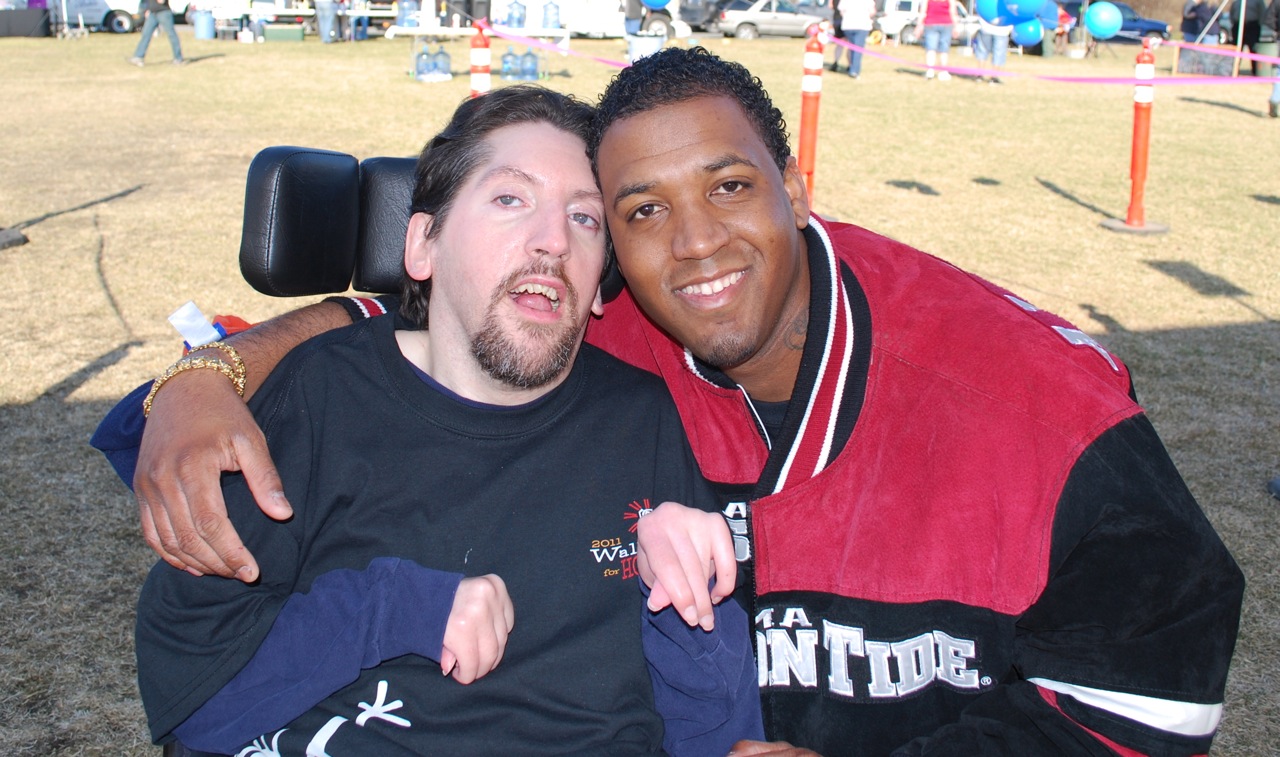
A major milestone was the creation of the Behavioral Health Services Department (BHSD), which responded to increasing referrals related to autism, trauma, and mental health. It prioritized trauma-informed, wraparound supports and expanded clinical expertise. This helped lay the groundwork for future statewide behavioral health access.
Hope promoted community inclusion through employment programs, artistic entrepreneurship, and wellness initiatives like nutrition education and smoking cessation. The Certified Direct Support Professional (CDSP) apprenticeship program gained national recognition, earning an “Innovator” designation from the U.S. Department of Labor, and staff training expanded to include autism, end-of-life care, and suicide prevention.
Community engagement flourished during these years—individuals supported by Hope competed in Special Olympics, held art exhibitions, gave legislative testimony, voted in local and state elections, and volunteered in their neighborhoods. The organization received international recognition from the American Association on Intellectual and Developmental Disabilities (AAIDD) for its efforts in community inclusion. These “gold medal moments” were a visible affirmation of Hope’s vision—a society that sees and values every person.
Key Agency & Statewide Priorities
Person-Centered Services
Behavioral Health Expansion
Sustainable Operations
Family Navigation & Advocacy
Workforce Excellence
Community Inclusion
The Willow Ranch
Established to offer individuals with disabilities the opportunity to pursue a rural, self-sustaining, intentional lifestyle, the Willow Ranch had now steadily grown into a thriving and multifaceted program. Situated on 70 acres, the Ranch supports a variety of activities including hunting, fishing, trapping, animal husbandry, gardening, woodworking, mechanics, and raising livestock—promoting independence, vocational skills, and full participation in community life.
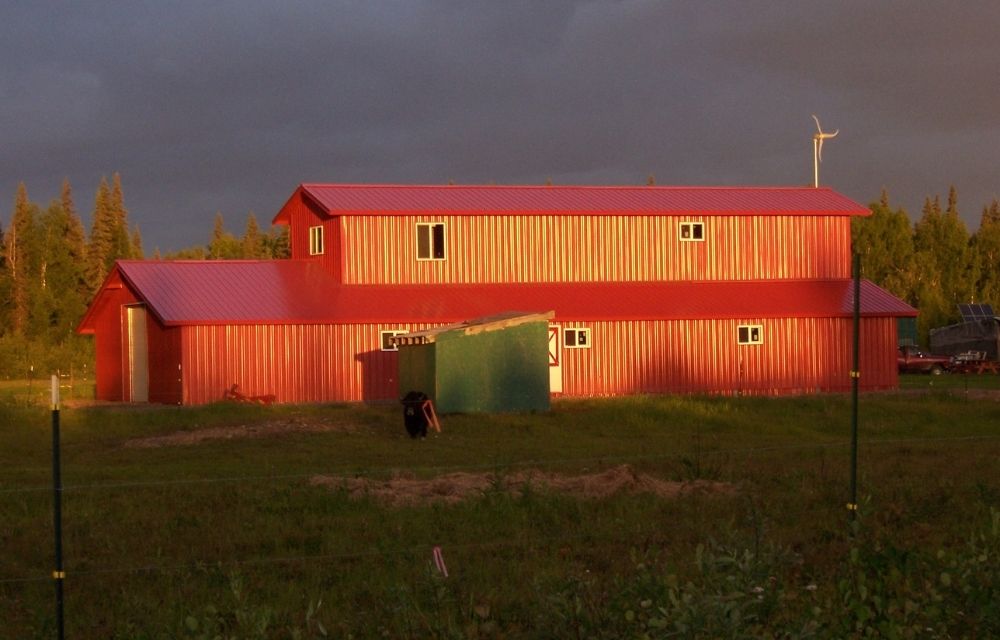
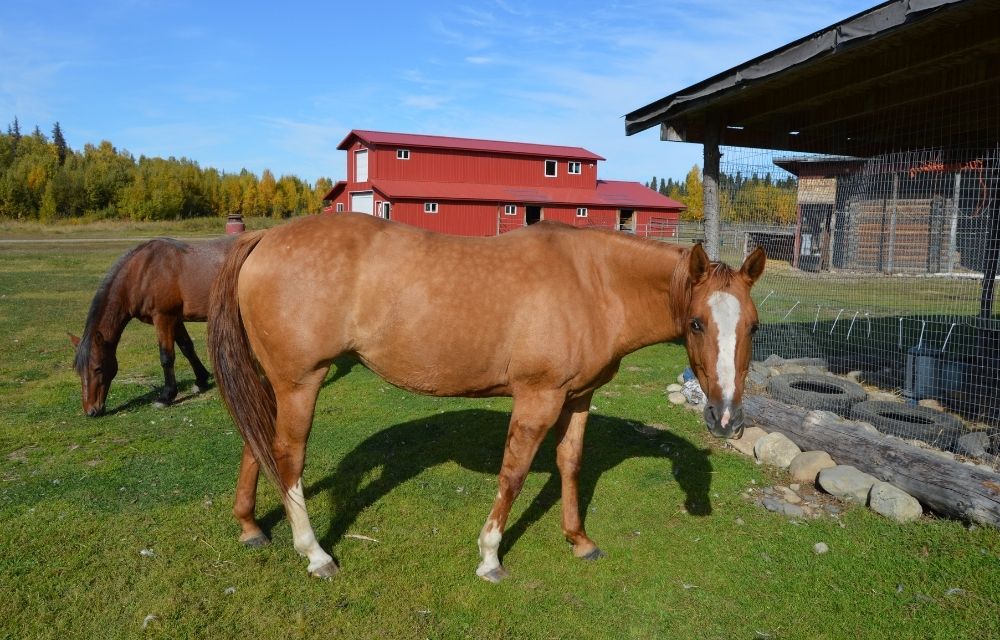
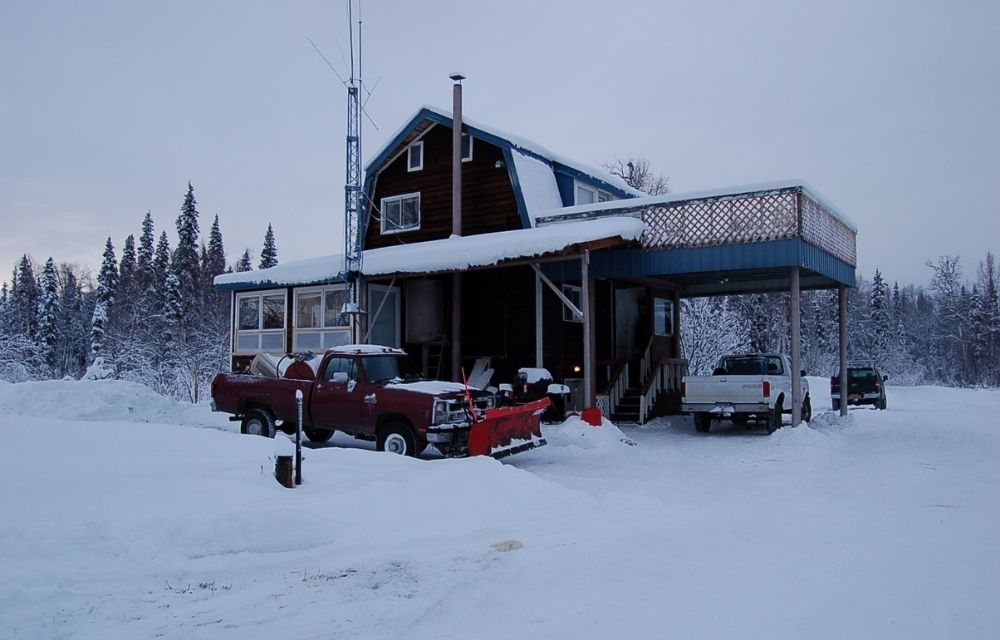
In 2010, new living quarters and a workshop were added to accommodate the growing number of residents and to provide on-site repairs and maintenance for vehicles and equipment. In 2012, with ambitions to expand into producing finished wood products such as picnic tables, flower boxes, wall plaques, birdhouses, and custom signs, the Ranch received a significant boost through a grant from The Alaska Mental Health Trust that supported the construction of a dedicated woodshop and the purchase of new woodworking equipment, allowing residents to launch a small wood-cutting business.
A major milestone for the Ranch's development came in 2018 with a fundraising campaign to bring electricity to the off-grid property. What began with a community barbecue grew into a collaborative effort involving local residents and businesses. Key partners, including Northern Powerline Constructors, Anixter, and Lynden, donated labor, materials, and transportation. Volunteers helped clear the powerline route, remove trees and brush, install power poles, connect power lines, and ensure the system met safety and operational standards. Thanks to the generosity of these partners and the funds raised over 18 months, the project was completed in November 2019 with minimal financial impact to the agency—a testament to the power of community collaboration.
Today, the Willow Ranch continues to serve as a meaningful, inclusive environment where several gentlemen live with purpose—working the land, caring for animals, honing their skills, and contributing to a rural lifestyle.
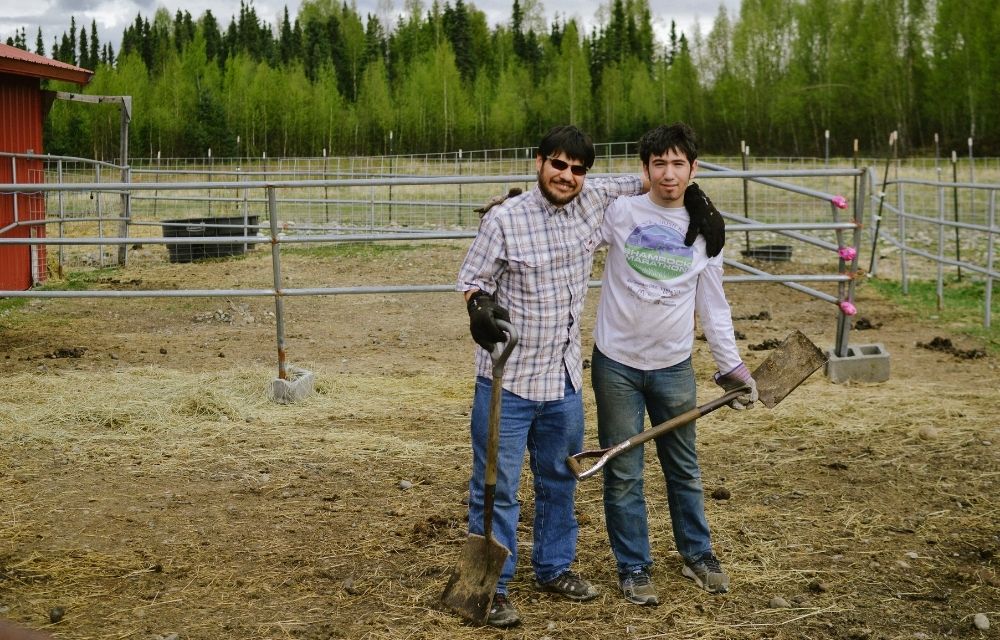

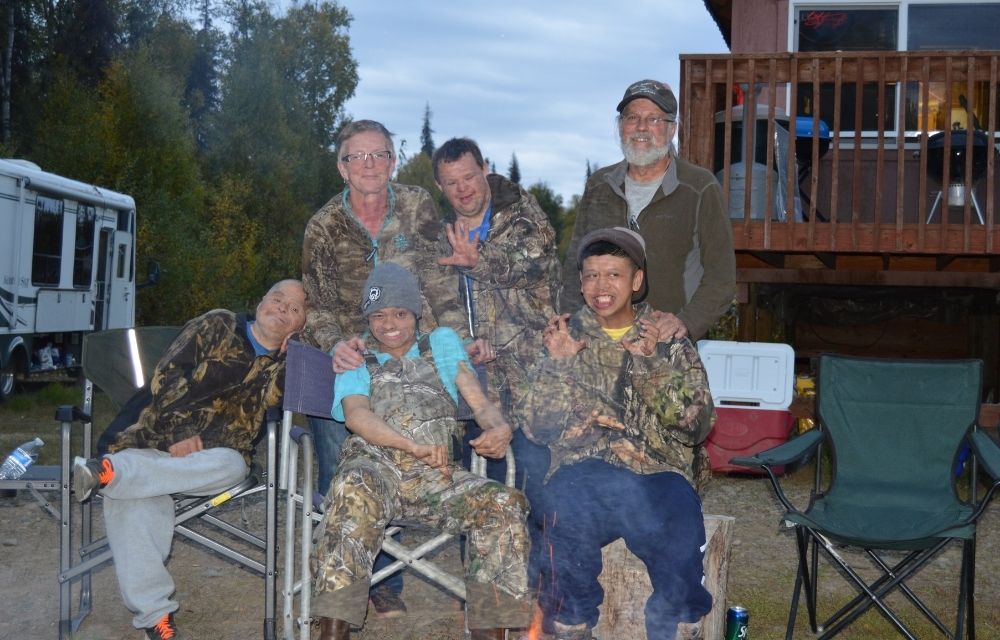
“Living at the Willow Ranch has changed my life. I’ve become very independent and I love the responsibilities of tending to the animals and helping maintain the grounds. I really enjoy making things in the wood shop” — Brian.
Kenai Community Center
In response to the growing demand for services and space on the Kenai Peninsula, Hope broke ground on a new 4,500-square-foot community center in late 2014.
The project was the result of over three years of planning, shaped by stakeholder focus groups who shared their vision for a space that could serve diverse needs. Through this collaborative process, a comprehensive design and user plan was developed to ensure the center would meet evolving program goals and community expectations.
The total construction cost of $1.5 million was supported by a combination of legislative and philanthropic funding. The Alaska Legislature contributed $435,000 through capital grants over three years, while The Alaska Mental Health Trust and the Rasmuson Foundation awarded $75,000 and $300,000 respectively. Additional funding was secured through grants from the M.J. Murdock Charitable Trust, ConocoPhillips, and the generosity of local businesses and individuals. The remaining funds were raised through an active community campaign.

The Kenai Community Center officially opened in June 2015 and became a vibrant hub for connection, learning, and creativity. It offered accessible recreation, educational opportunities, and inclusive community engagement for individuals receiving services as well as the broader public. The center hosted collaborative art projects involving various media, with participants showcasing their work in local venues such as cafés and coffee shops.
The impact of the center extended beyond Hope’s own programs. By welcoming individuals from other agencies and the wider community, the Kenai Community Center fostered relationships, provided a welcoming gathering space, and increased awareness of Hope’s mission and services. It stood as a symbol of inclusion and community spirit, created through shared vision, partnership, and dedication.
“Hope has meant everything to my family. The [Kenai Community] Center will ensure Alaskans always have the support they need now and into the future.” — Dennis
Kenai Intentional Neighborhood
In 2016, Hope collaborated with a group of dedicated families to address one of the most common concerns for parents of children with disabilities—what happens to their children when they are no longer able to provide care. Together, they envisioned a community rooted in shared support, safety, and inclusion. This vision became Alaska’s first intentional neighborhood for individuals with intellectual and developmental disabilities, located just outside Sterling on the Kenai Peninsula. Designed to reflect the rural, farming culture of the region, the neighborhood would eventually include six homes, walking trails, gardens, beekeeping, and other microenterprises that offered meaningful, community-connected living. Phase one of the project—site preparation and utility development—was launched in August 2016 with generous funding from the Reitman Family Trust. This foundational work laid the groundwork for construction to begin in 2017.

By 2017, the Kenai Intentional Neighborhood had progressed to phase two, with housing construction well underway thanks to financing from the Alaska Housing Finance Corporation. The excitement among future residents and their families was palpable, with eleven of the twelve future residents already identified and preparing to move into their new homes by spring. The neighborhood was intentionally designed to offer more than just housing—it aimed to create a lasting culture of care, built by families with shared values and a commitment to community.
“Kara will have a permanent place to call her own…in a neighborhood that offers her the outdoors and recreational lifestyle that will bring joy.” — Fitzgerald Family
In 2018, this long-awaited dream became a reality. Eleven individuals moved into their “forever homes” in the newly opened Kenai Intentional Neighborhood. The six homes created a unique and inclusive community where residents gained independence and parents found peace of mind knowing their loved ones would thrive in a secure, supportive environment. Plans for phase three began the same year, with the construction of a community gathering place, outbuildings, and continued development of microenterprises such as beekeeping and gardening—providing residents with alternatives to traditional employment.
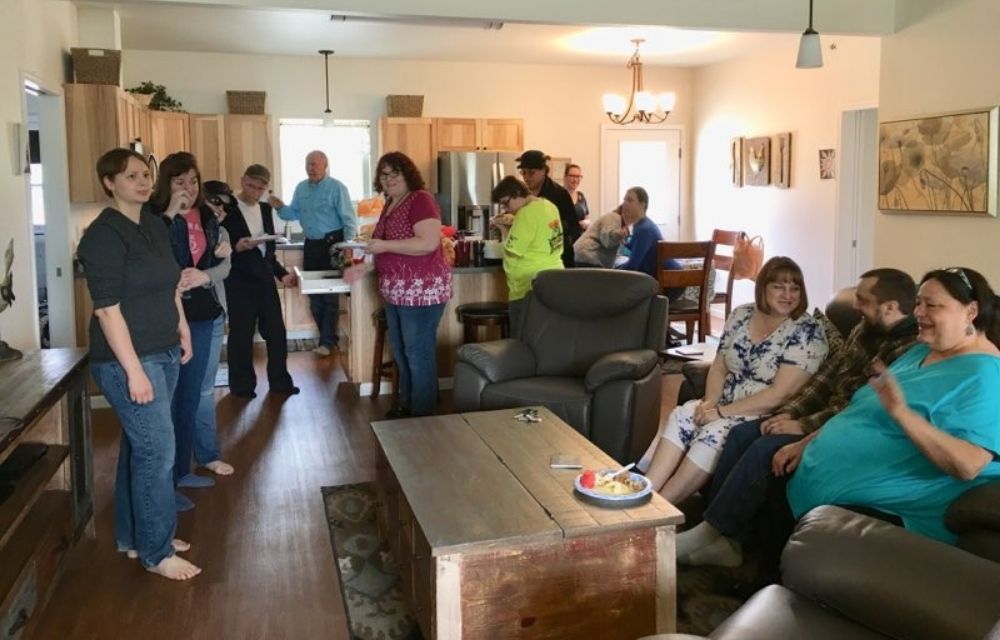

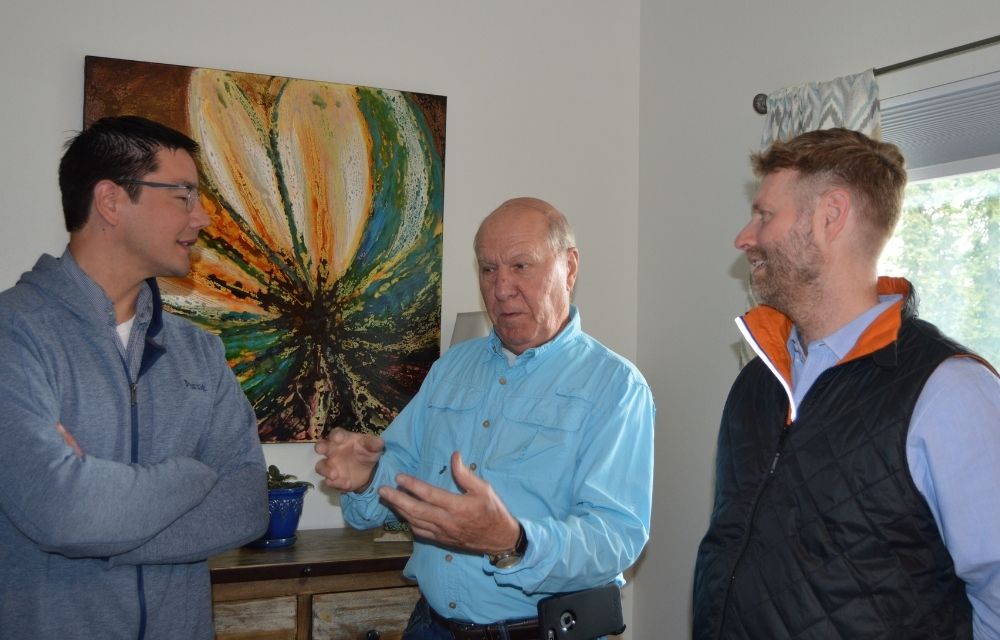
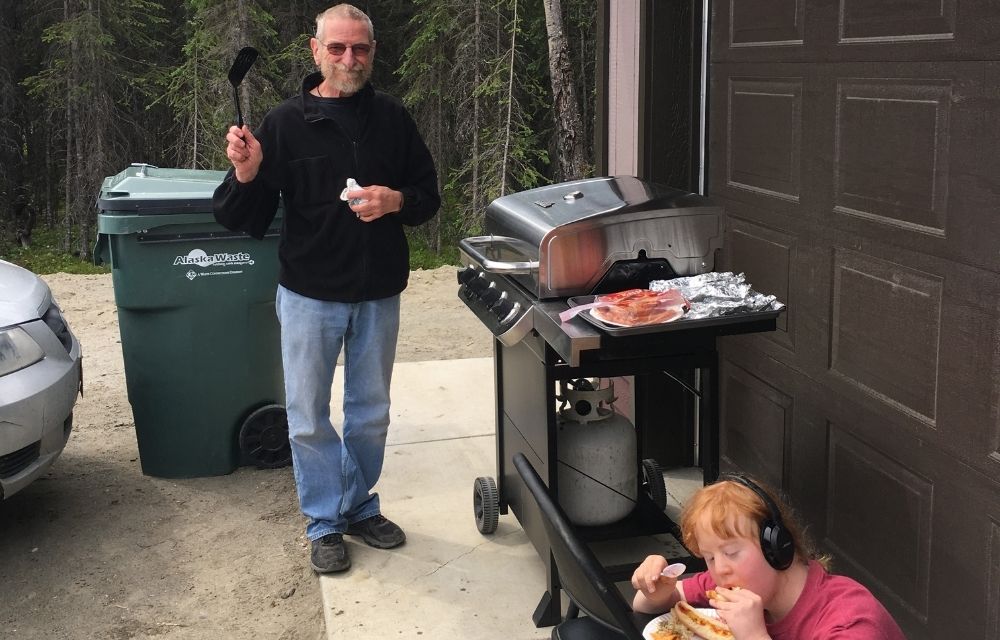
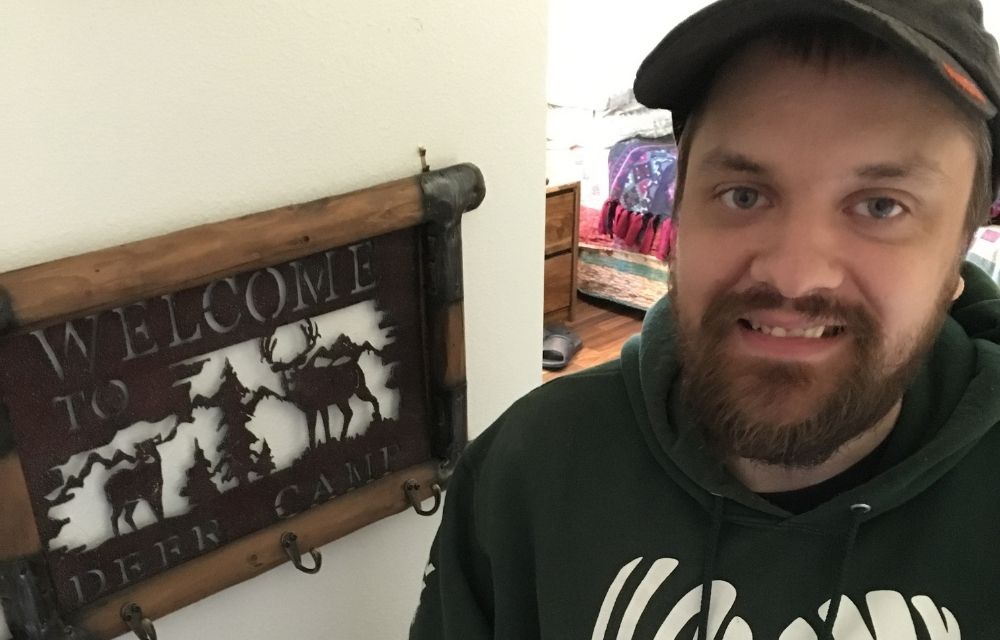

By 2019, the Kenai Intentional Neighborhood stood as a completed multi-year, multi-phase project. Comprised of five two-person assisted living homes, a triplex, and a central Gathering Place, the neighborhood reflected years of planning, partnership, and vision. Landscaping and additional site improvements were completed in the spring of 2020. The project would not have been possible without the tremendous support of the Rasmuson Foundation, the M.J. Murdock Charitable Trust, the Reitman Family Trust, the Alaska Mental Health Trust Authority, and other generous partners. Their investments made it possible for families and individuals to realize a new model of community—a neighborhood where people with disabilities live with dignity, connection, and joy.
Hope Studios and Gallery
Hope Studios had established itself as a collaborative art studio without walls, barriers, or limits on imagination. Artists of all abilities worked side by side, exploring a wide range of mediums and blending their talents to create meaningful, expressive works of art.
The Studio embraced the belief that art knows no boundaries and that self-expression should be accessible to all—regardless of ability.
Through a variety of classes offered at community centers and public venues, artists developed their individual voices while working as part of a supportive and inclusive creative team. Hope Studios quickly became a catalyst for bringing art into the broader community, regularly participating in public exhibitions throughout Anchorage and beyond—First Friday events, collaborative shows at local coffee shops, craft fairs, art shows, conferences, and other community venues and public events.
Hope Studios installed a permanent installation at the Z.J. Loussac Public Library in Anchorage for the reimagined Play and Learn Early Literacy Center. The center is designed for families with children under three years old to help Alaskan children read, write, sing, play and talk in an effort to increase communication and early learning.
Community support played a major role in the Studio’s growth. Donations of art supplies, materials, and scholarships helped sustain programming and expand opportunities for artists. The Studio also hosted visiting artists, produced custom-designed items such as greeting cards for local businesses, and created a line of sellable products including magnets, dog leashes, and wearable art like T-shirts and shoes.
The Studio also partnered with the Alaska Zoo, and artists spent a day drawing live animals. Nearly 100 drawings were turned into wall hangings, apparel, and other merchandise, culminating in a joint fundraising event that raised thousands of dollars for both the Studio and the zoo. One of the featured works, “Mystical Bear,” was later auctioned off as a fundraising piece.
As the popularity of Hope Studios grew, it expanded into a larger, purpose-built space featuring increased workspace, a Gallery (see below), and new vocational opportunities. It also became the center for Hope’s recreational and educational programming—offering inclusive classes, after-school programs, summer camps, and weekend activities for people of all ages and abilities.
Whether through public exhibitions, community partnerships, or individual exploration, Hope Studios provided artists of all abilities with the freedom and opportunity to express themselves, connect with others, and share their unique talents with the world.
Grand Opening of Hope Gallery
Thanks to the funds raised through a special appeal at Hope's Auction, along with other fundraising dollars, Hope Gallery celebrated its long-awaited grand opening in June 2013, providing a storefront to display the original artwork created by the artists of Hope Studios. Located at 650 West International Airport Road, the Gallery offers the public a welcoming space to explore and purchase one-of-a-kind, handcrafted pieces. Open every weekday from 10am to 4pm, it has become a destination for those seeking meaningful gifts and art.
The Gallery offered a variety of one-of-a-kind items, including upcycled furniture, wall art, jewelry, greeting cards, apparel, and more. It served as both a retail space and a celebration of the talents and contributions of a diverse group of artists, enriching the community through creativity and inclusion.
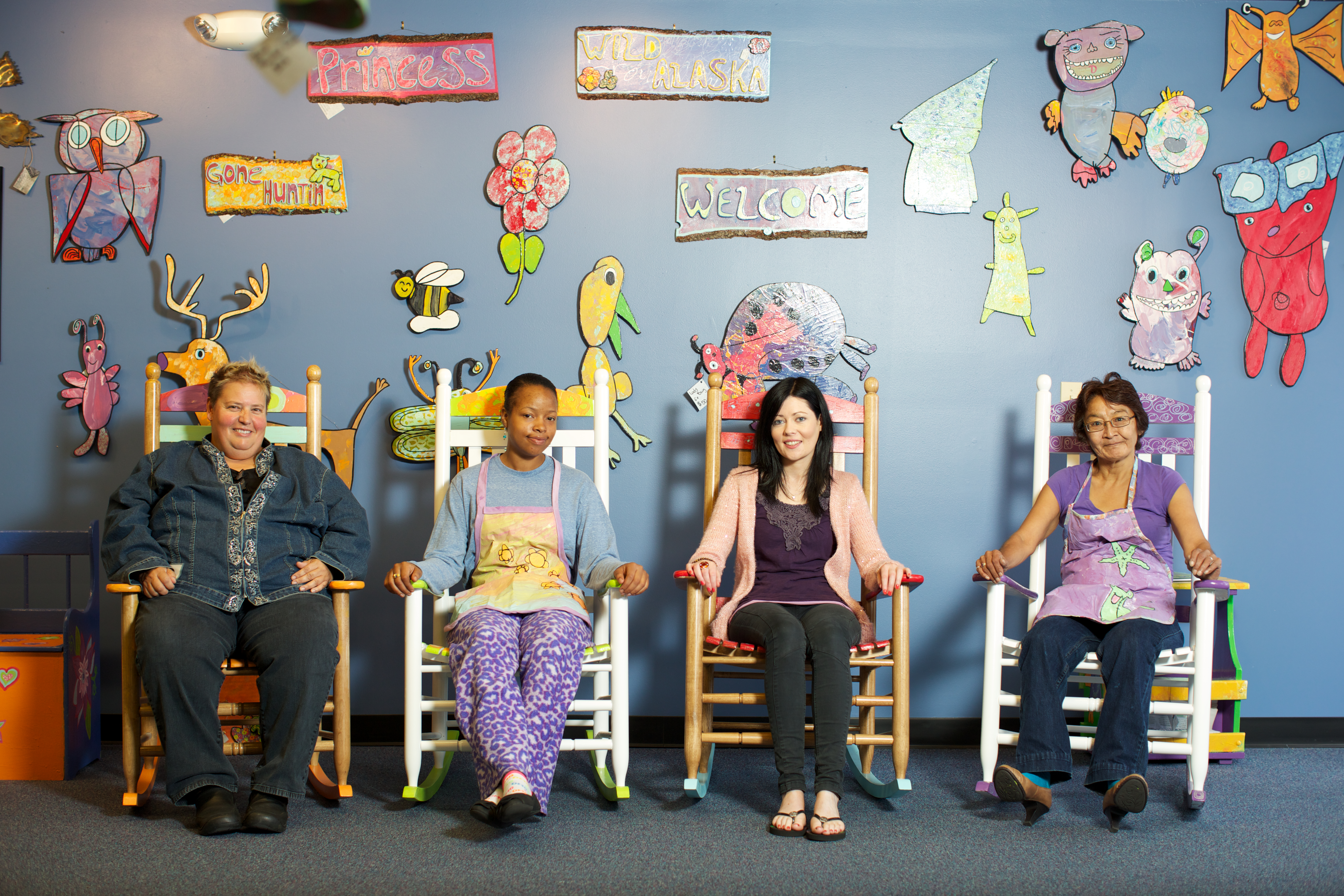
Farewell to Hope's Founder
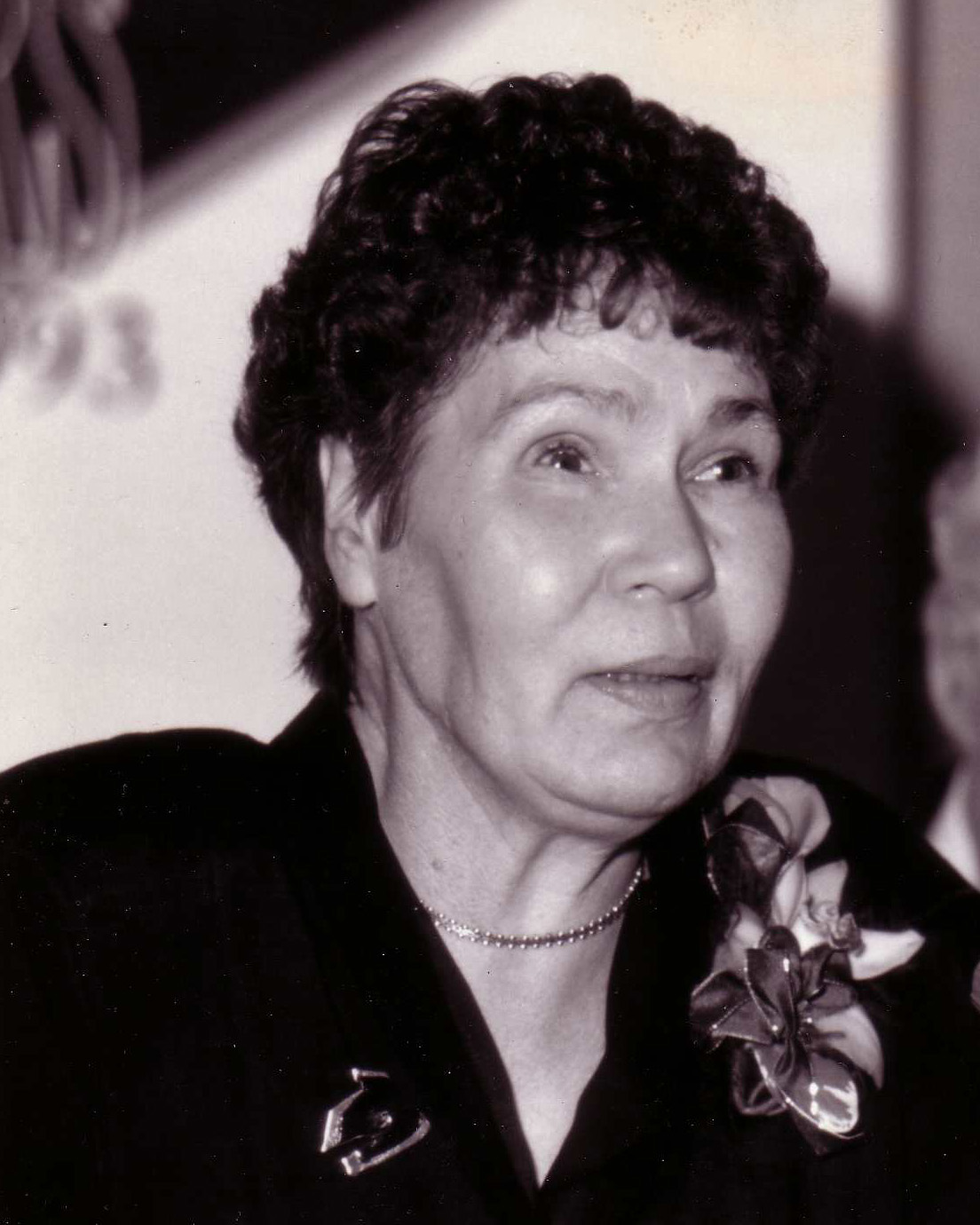
Hope’s founder, Nancy Stuart Johnson, passed away in August of 2013.
Nancy focused on a vision that children with disabilities belong in the community. Her tenacity and devotion planted the seeds for the organization of today to flourish. From a few children in her home 45 years ago, to the Hope of today, the growth has been significant. Hope is now a statewide agency supporting over 1,400 individuals and families to live full lives in the community of their choice. Nancy is proof that one person with passion can make a tremendous difference in the world.
Nancy was honored posthumously with Hope’s Visionary Award at the Annual Appreciation Luncheon in September of 2013 for the dedication that laid a foundation for today’s statewide outreach. Her legacy rests in the simple but magnificent vision that children experiencing disabilities belong in families, not institutions. She rallied a community to share her vision and, as a result, thousands of individuals and families have been touched by her dedication.
The Board of Directors, management, staff and the individuals and families who choose Hope’s supports are indebted to Nancy for her vision and her selflessness in seeing the dream become a reality.
Hope Recognized for Inclusion, Innovation, and Impact
In 2010, Hope was honored with the Full Community Inclusion Award from the American Association of Intellectual and Developmental Disabilities (AAIDD), an international recognition presented annually to one organization worldwide. This prestigious award, given at the AAIDD Conference in Providence, Rhode Island, celebrated Hope's unending commitment to full community inclusion for individuals who experience intellectual and developmental disabilities. The selection criteria emphasized Hope’s consistent advocacy for community-based supports, empowerment of local communities, inspiration for broader efforts at multiple levels, and sensitivity to cultural issues surrounding disabilities. The award stood as a testament to Hope’s mission and its impact across local, national, and international spheres.
In 2012, Hope continued to receive recognition for its excellence and community presence. That year, Hope was voted “Best Non-Profit” in Anchorage during the “2012 Press Picks,” an annual reader-driven event hosted by the Anchorage Press, with over 1,500 participants casting votes. Additionally, Hope was one of only four organizations to receive a $5,000 award through the Kendall Cares contest, hosted by Kendall Toyota, in which community members demonstrated their support by “liking” their favorite charities on Facebook. These honors reflected the tremendous and ongoing support that Hope received from the people of Alaska.
Also in 2012, Hope deepened its investment in employee development by advancing the Certified Direct Support Professional (CDSP) Program. This initiative combined classroom instruction, job analysis, and mentorship, all grounded in a nationally recognized set of core competencies. The program supported employee longevity—vital to the consistency and stability needed by those who chose Hope’s services. At that time, 31 employees had either completed or were actively participating in the program. Hope’s apprenticeship component proved so successful that it garnered national recognition in Washington, D.C., with the “21st Century Registered Apprenticeship Trailblazer and Innovator” award. The Pathways Practicum Apprenticeship Program exemplified innovation in workforce development, with lasting implications for the future of Registered Apprenticeship in the human services field.
In October 2014, Hope achieved national accreditation through the Council on Accreditation (COA), affirming its commitment to best practices in human services and its status as a certified Behavioral Health Service Provider. In conjunction with these efforts, Hope redesigned and launched a new website to enhance communication with stakeholders and increase engagement with its broader community. That same year, Hope hosted its 3rd Annual Clergy Day in Anchorage, which brought together over 40 religious leaders from 13 diverse denominations and faith traditions. Reverend Michael Burke, senior pastor of St. Mary’s Episcopal Church in Anchorage, delivered a keynote address urging faith communities to move beyond ministry to people with disabilities and embrace ministry by people with disabilities. Clergy Day was designed to cultivate a community of religious leaders equipped to support the spiritual lives of individuals with disabilities.
Hope underwent a successful reaccreditation review by COA in the summer of 2018. Reviewers praised the organization’s visionary and innovative practices and highlighted the alignment of every employee with Hope’s corporate culture and mission. They observed staff across all locations—Anchorage, Kenai, and the Mat-Su Valley—actively supporting individuals in ways that elevated quality of life and demonstrated ethical and proactive practices. Reviewers visited Hope Studios, recreation centers, assisted living homes, and supported living apartments, and conducted interviews with staff, support recipients, and family members. They also completed extensive record reviews and met with management to evaluate the application of Hope’s Standard Operating Procedures. The expedited reaccreditation process reflected Hope’s deep-rooted culture of excellence and its ongoing commitment to high-quality services.
Through these accomplishments, Hope demonstrated its steadfast dedication to inclusion, innovation, and community connection—core values that shaped its ongoing legacy across Alaska and beyond.
Deaf Supports
In 2016, Hope received two grants from the State of Alaska’s Department of Health and Social Services to provide services to the Deaf and Hard of Hearing community. Recognizing that many individuals they supported were non-verbal, Hard of Hearing, or Deaf in addition to having intellectual or developmental disabilities, Hope expanded its programs to better meet their needs. The Rural Deaf Student Support (RDSS) program, funded by the Alaska Department of Education in partnership with the Division of Seniors and Disabilities Services, provides housing, transportation, and outreach to Deaf and Hard of Hearing students aged 3 to 22 from rural areas who attended the Alaska School for Deaf and Hard of Hearing in Anchorage.
The Deaf Supports Team identifies, recruits, and monitors host families licensed by the State of Alaska, who offer a supportive environment and daily assistance, including transportation, life skills development, community engagement, homework assistance, and communication development. At least one parent in each host family is fluent in American Sign Language (ASL) and knowledgeable about both Deaf and Native cultures. This program greatly benefits Hope’s stakeholders, raising awareness of Deaf culture nuances and strengthening partnerships with the Deaf community.
Alongside RDSS, Hope established its Deaf Navigator program, supported by a State of Alaska grant. The program offers free support services to Deaf and Hard of Hearing Alaskans and helping them coordinate with community resources using ASL and assistive technology. The Deaf Supports Team facilitates communication to improve access to employment, housing, and other opportunities, assists with paperwork, and navigates language barriers. They also provide free training for employers, service providers, and community groups on the needs of Deaf and Hard of Hearing individuals. The program actively conducts outreach to rural communities and offers public access to videophones, caption phones, TTY devices, and computers with internet.
In May 2017, the Deaf Navigator program began providing weekly ASL lessons to staff and support recipients, teaching basic signs and phrases through engaging games. Recognizing communication challenges between Deaf and Hard of Hearing individuals and police officers, the team developed an information 'visor card' that could be carried on police car visors and by civilians to facilitate easier communication. Due to its popularity, a wallet-sized version was also created for use in medical or emergency situations.
In September 2018, Governor Bill Walker signed SB80 Telecommunications: Disabled Subscribers at the annual Deaf Jam during Anchorage Deaf Awareness Week. This legislation, sponsored by Senator Costello, mandated telecommunications utilities to provide accessible services to Deaf, Hard of Hearing, and speech-disabled individuals, ensuring communication with the community and reasonable access to public telephone services.
Mental and Behavioral Health Services
In 2012, recognizing the growing need to support individuals facing mental health challenges, autism, and traumatic brain injuries, Hope established the Behavioral Health Services Department (BHSD). This new department consolidated Hope’s Mental Health network and Behavior Supports personnel to create a unified team capable of delivering services across the state. In Anchorage, the BHSD provided clinical mental health supports while expanding its reach to integrate behavioral health services throughout all regions. The formation of this department marked a significant step toward increasing Hope’s capacity to treat individuals experiencing chronic mental illness.
By 2014, the Behavioral Health Services Department had grown to support 91 individuals across Alaska, and the momentum continued into 2016, when Hope launched several initiatives to expand its behavioral health reach. That year, Hope opened a Mental Health Home in Utqiagvik (formerly Barrow) in partnership with the North Slope Borough’s Integrated Behavioral Health (IBH). The program was designed to support individuals in their journey toward wellness, using Hope’s Beliefs, Values, Mission, Vision, and Expectations as the foundation for recovery. Residents of the Utqiagvik home were supported in taking responsibility for their own recovery in a therapeutic environment that promoted a combination of collaboration, autonomy, and social support. The residents actively participated in their community—through employment, volunteering, artistic endeavors, and educational pursuits.
Also in 2016, Hope was selected to pilot the Alaska Psychiatric Institute/Alzheimer’s Disease and Related Dementias (API/ADRD) Transition Pilot Project. Funded through a multi-agency collaboration, this project aimed to support Alaskans experiencing dementia and co-occurring disorders by enhancing community-based living opportunities. Hope began developing an assisted living home in Anchorage, designed to serve up to nine individuals. The home opened in 2017 and provides culturally and spiritually sensitive care, utilizes smart-home technology for safety, and offers individualized treatment in a community setting—helping reduce the need for institutional placements.
Executive Emeritus Passes
Alaska lost a visionary leader and friend with the passing of Stephen P. Lesko on May 29, 2016. Steve served as the Executive Director for Hope for 37 years before retiring in December of 2014. Throughout his tenure as Executive Director he championed the rights of Alaskans with disabilities. His passion for advocacy is legendary not only in Alaska, but nationwide. His vision was contagious and moved people and systems to action. He shared his journey at Hope with long-term colleague and friend Roy Scheller, and together they created a value-driven agency.
Steve's advocacy became the heart and soul of the Key Coalition of Alaska. Key has become one of the leading grass roots advocacy organizations in the state, impacting hundreds of individuals and families experiencing disabilities. While many knew him as a skilled orator, Steve was also a talented musician, poet and writer.
At Hope, Steve was far more than just Executive Director. He was a sincere friend, mentor, guide, and role model to all Hope stakeholders. He was revered as a great storyteller and powerful public speaker. He lit candles that will forever continue to cast a light of hope, and burn as a shining example of what a life well lived should look like.
Hope Community Resources introduced a
new brand identity in 2018.
